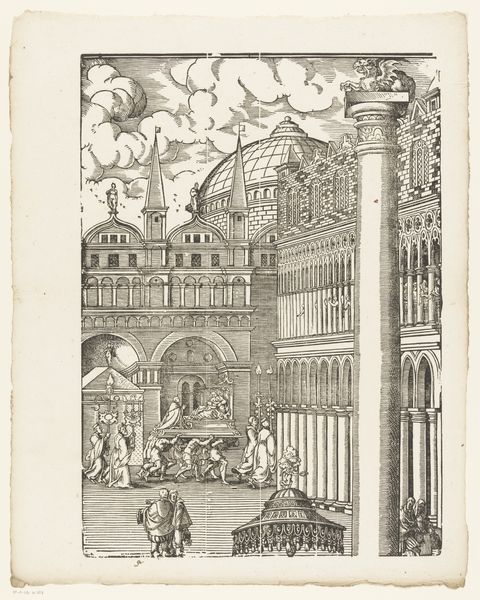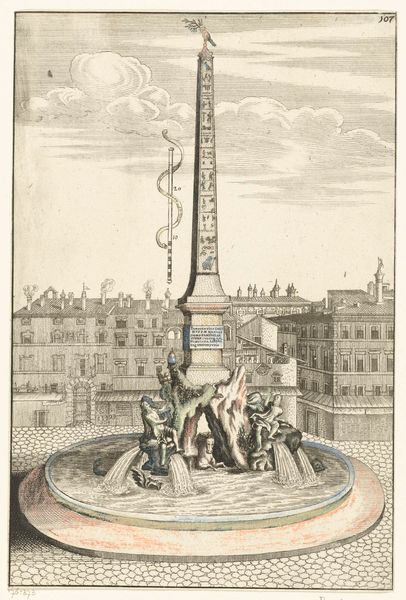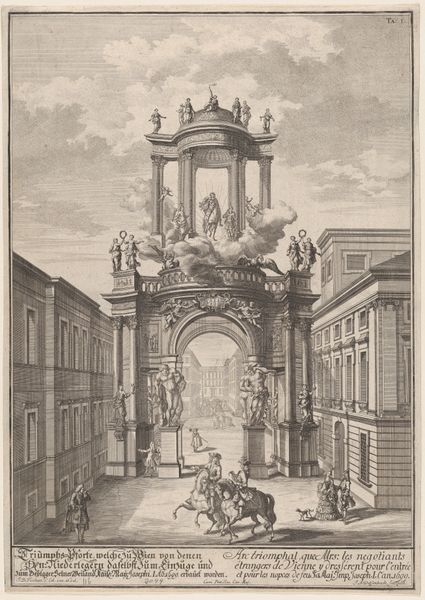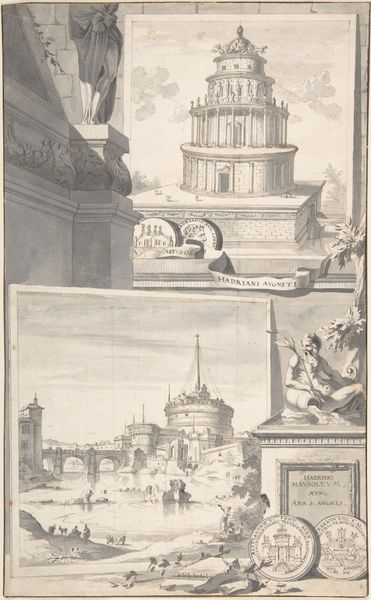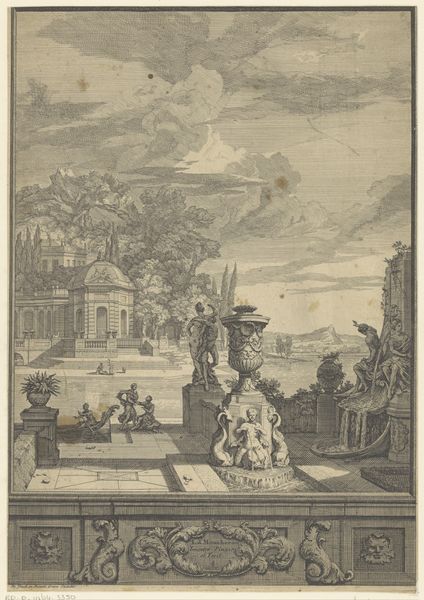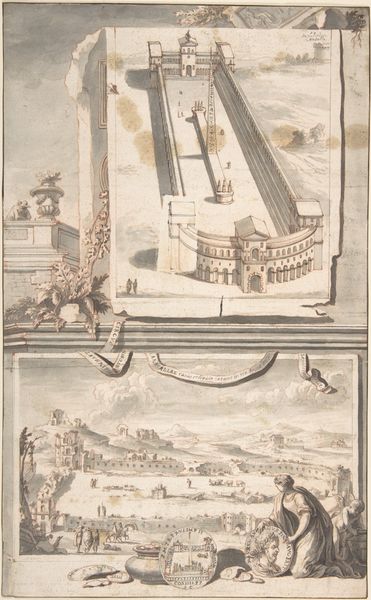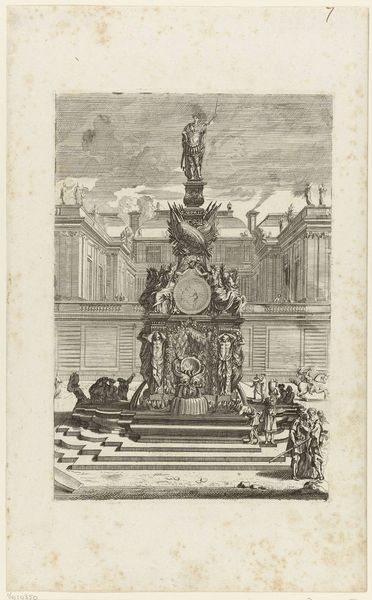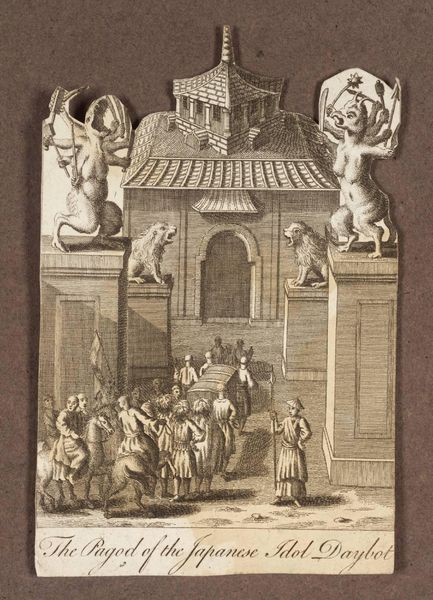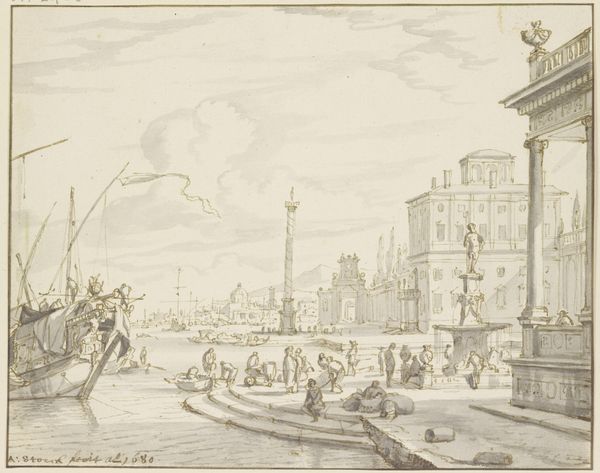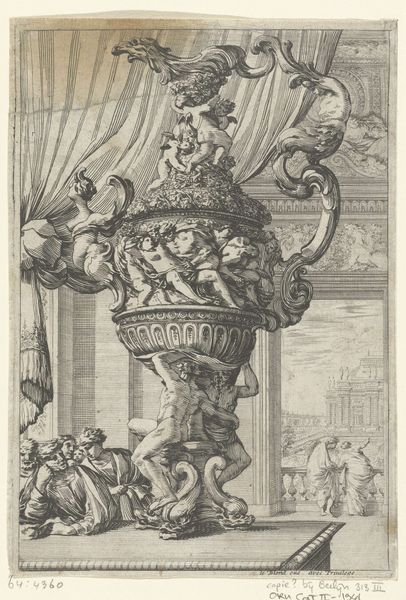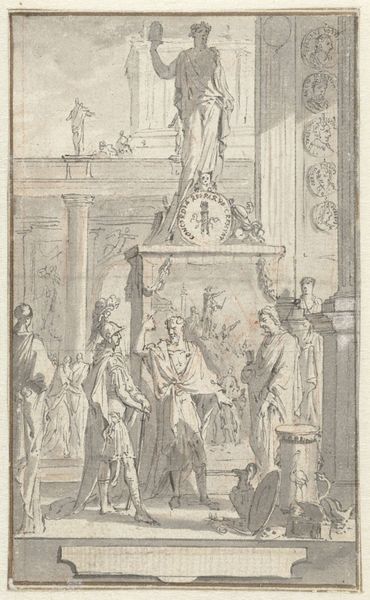
A Reconstruction of a View of the Obelisk at the Entrance of the Via Flaminia 1690 - 1704
0:00
0:00
drawing, print, etching, ink, engraving, architecture
#
drawing
#
baroque
# print
#
etching
#
landscape
#
ink
#
geometric
#
cityscape
#
engraving
#
watercolor
#
architecture
#
building
Dimensions: 13 x 8 1/16 in. (33.0 x 20.5 cm)
Copyright: Public Domain
Curator: Looking at Jan Goeree's "A Reconstruction of a View of the Obelisk at the Entrance of the Via Flaminia," created between 1690 and 1704, what's your immediate take? Editor: An interesting composition; the subdued palette certainly gives it an antique, almost dreamlike quality. The use of line and hatching to create depth is quite striking. Curator: Indeed. Goeree’s print—using etching, engraving, and ink—presents us with a cityscape steeped in the processes of architectural representation. He's documenting and, in some ways, participating in the discourse of urban planning and power, framing Rome as this spectacle of geometric design. Editor: From a formal perspective, notice how the verticality of the obelisk commands your gaze, anchoring the entire composition. The cherubs introduce a contrasting element of frivolity, almost Rococo flair, yet the overall mood remains quite restrained. It is also remarkable how such diverse printmaking methods as etching and engraving, were combined for the maximum rendering result. Curator: Consider how this cityscape as a commodity. These prints were disseminated, consumed, and became part of how people understood and imagined Rome. Goeree is participating in a system where art reproduces ideology. Editor: Yet, despite the socio-political implications, can’t we still admire the mastery in rendering light and shadow? Observe how the architectural features have been designed. Note the sharp precision defining edges, and the balance with softer gradations that suggest atmospheric depth. It exemplifies the beauty that can come from observation, regardless of its use as propaganda. Curator: Perhaps, but isn't that mastery serving the purpose of promoting a specific vision of Roman grandeur? Even the artist’s hand becomes another instrument in reinforcing the status quo through architecture. Editor: Fair point, and thank you for making it! Analyzing his composition, one can better understand its deeper architectural nuances, moving past its simple lines. Curator: Thank you. Looking at the artwork from a historical perspective allows us to consider it more deeply in terms of the socioeconomic context it was made within.
Comments
No comments
Be the first to comment and join the conversation on the ultimate creative platform.

